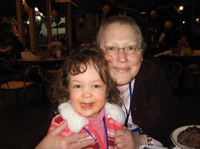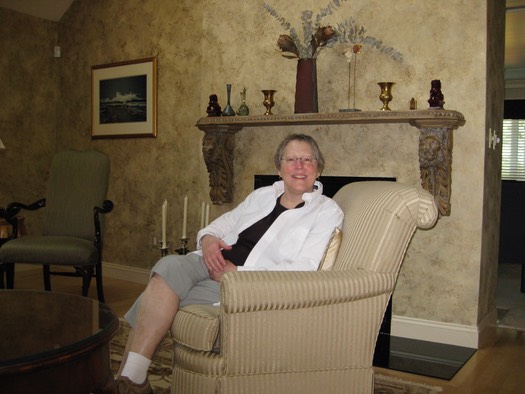Thanks to blood donors, Carol Axelrod was able to celebrate her 60th birthday.
Thanks to blood donors, she was able to see her granddaughter turn three years old.
And thanks to the generosity of blood donors, our family received an enormous gift—an extra year with the mother, grandmother, daughter, sister, and aunt we loved. Because when you donate blood, you’re doing more than helping an accident victim survive or improving the quality of life of a chronically ill patient. You are also giving families the opportunity to spend more time with a person who means everything to them.
Carol was a single mother who raised two daughters and sent both of them to Ivy League colleges. She was an elementary-school teacher in Philadelphia for over 30 years. In April 2003, she was 55 years old and starting to look ahead to retirement when she was diagnosed with multiple myeloma, an incurable cancer of the blood and bone marrow that has no known cause.
In 2004, Carol’s disease progressed to the point that her doctor recommended she undergo two autologous stem-cell transplants, the most aggressive treatment then available to myeloma patients. Just a few weeks after her granddaughter, Emily, was born, Carol entered the hospital to prepare for the transplants. It took almost a full year for her to recover from the procedures, but by the end of 2005 the cancer was in remission.
When Carol chose to undergo the stem-cell transplants, she did so because she believed that they represented her best hope for going into a long remission. Her top priority was to spend as much time as possible with her family. In the end, though, her remission lasted for less than a year, and the cancer returned in an extremely aggressive form. None of the treatments the doctors tried worked for more than a short time.
In July 2007, just two months before her 60th birthday, Carol was hospitalized with a bleeding problem. It was a complication of her illness, and the only thing that the doctors could do to try to stop the bleeding was give her multiple blood transfusions and hope that eventually her body would start to do what it needed to do to heal itself.
For more than a week, Carol received multiple blood transfusions each day. The doctors said that she could die at any time, especially if they were not able to get the blood products that she needed. She was awake; she knew everything that was going on. And she was grateful to the unknown people who had donated the blood that the doctors were using to try to save her life.
Thanks to blood donors, Carol ultimately was able to leave the hospital. Two months later, she celebrated her 60th birthday at her favorite restaurant, with her family around her. The following month, she attended a family anniversary party. And in November of that year, she was sitting with her granddaughter as Emily blew out the candles on her third birthday cake.

After that hospitalization in July 2007, Carol’s body never regained enough strength to allow her to resume treatment for the cancer. Yet she lived until July 1, 2008, enabling her family to celebrate a year’s worth of holidays and special occasions with her.
During that year, she went to the hospital for blood transfusions at least twice a week. Occasionally, if she was hospitalized, she required more than one transfusion a day. But she was able to live independently and participate in almost all of the activities that she had always enjoyed.
Our family feels that we owe all of the special memories of that last year to the generosity of blood donors. The doctors told us that they had never seen someone like Carol. They had never had a patient who was transfusion-dependent for as long as she was. They were amazed that she lived as long as she did, with her only treatment being transfusions of blood products. We were amazed that the blood products she needed were always there for her—and, of course, we were extremely grateful.
After Carol passed away, our family organized a blood drive in her memory at Lankenau Medical Center, the hospital where she had received her transfusions. Held in October 2008, it turned out to be the hospital’s most successful blood drive up to that point. We decided to turn the blood drive into an annual event at Lankenau. In 2012, we began holding drives in other locations as well.
It has been our privilege to be able to help others in Carol’s name. Every two seconds, someone in the U.S. needs blood—and nine of out ten people will require a blood transfusion at some point during their lives.
Human blood cannot be manufactured, and there is no substitute for it. Blood donors were the only people who could give our family an extra year with Carol. Many, many other families find themselves in the same position every day. Blood is used in emergency rooms and operating rooms, but people with cancer and other chronic illnesses also require blood transfusions—often on a regular basis. Thanks to people who are willing to take an hour out of their day to donate blood, these patients are able to continue to fight their illnesses—and spend more time with their loved ones.
